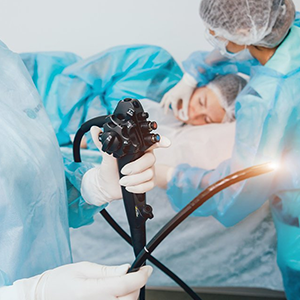
Oesophago Gastro Duodenoscopy

Oesophago Gastro Duodenoscopy
OGD (Oesophago-Gastro-Duodenoscopy) is a medical procedure that uses a flexible tube with a camera and light on the end (endoscope) to visually examine the:
1. Esophagus (food pipe)
2. Stomach (gastro)
3. Duodenum (first part of the small intestine)
Purpose:
1. Diagnose : Conditions like gastroesophageal reflux disease (GERD), stomach ulcers, duodenal ulcers, and esophageal cancer.
2. Monitor : Treatment progress or disease progression.
3. Treat : Certain conditions, such as removing polyps or performing dilation.
Procedure:
1. Preparation : Patient lies on their back, and a local anesthetic is sprayed to numb the throat.
2. Insertion : The endoscope is inserted through the mouth and guided through the esophagus, stomach, and duodenum.
3. Examination : The doctor visually examines the inner lining of the esophagus, stomach, and duodenum, taking biopsies or performing treatments as needed.
4. Removal : The endoscope is slowly withdrawn.
Risks and Complications:
1. Bleeding : From biopsies or polyp removal.
2. Perforation : Hole in the esophagus, stomach, or duodenum.
3. Infection : Rarely, bacteria can enter the bloodstream.
4. Reaction to sedation : Rarely, patients may experience adverse reactions.
Preparation and Aftercare:
1. Fasting : Patient must fast for 6-8 hours before the procedure.
2. Sedation : Patient may receive sedation to relax during the procedure.
3. Monitoring : Patient's vital signs are monitored during and after the procedure.
4. Recovery : Patient can usually go home after the procedure, but may experience some discomfort or bloating.
